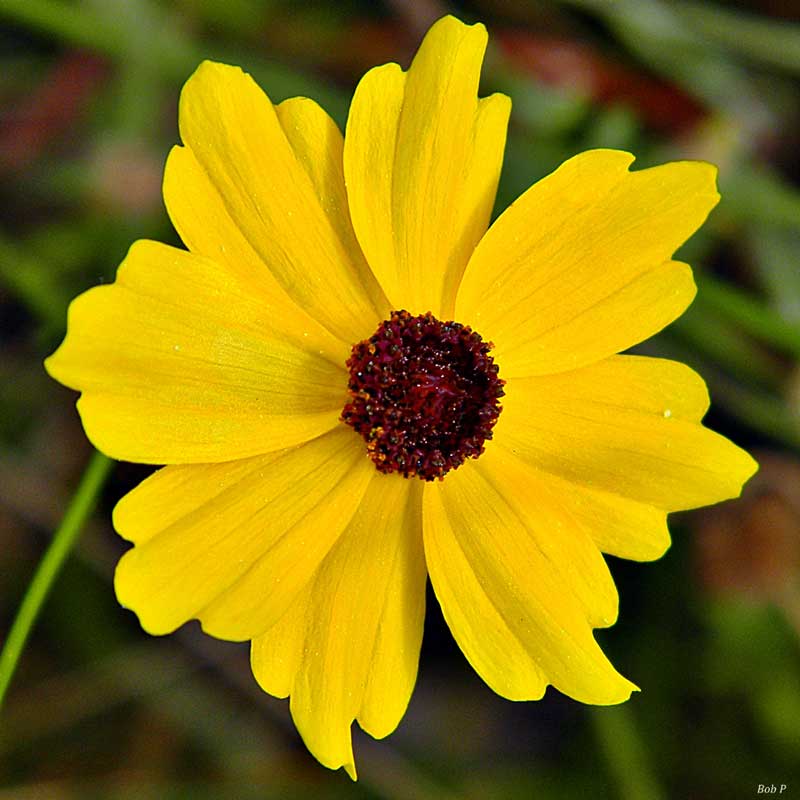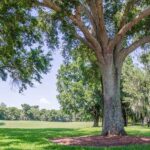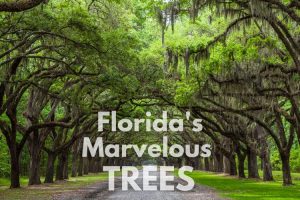Represent your state by inviting the native flowering plants – and by extension, native wildlife – into your garden! Florida boasts a wide variety of flowering plants compared to its neighboring states due to its size, position along the gulf coast, and tropical climate. From Mexican Heathers to Buttercups, all manner of plants can grow comfortably. However, about 11% of the flowers in Florida are native, and to help Florida’s flowers, I have crafted a list of some unique and easy to grow flowers to house in your garden. Bring these flowers home and give them a greater foothold in their native land!
1. Leavenworth Tickseed (Coreopsis Leavenworthii)

What better way to begin this list than with not only an easy to grow flower, but one that happens to be Florida’s State Wildflower! While the title of State Wildflower covers all 11 native species of Coreopsis, the Leavenworth Tickseed is rarely found outside of Florida, making it stand out from its siblings.
The Tickseed is often found in wetlands such as marshes and prairies. It prefers full sun and is very adaptable, tolerating moist to dry conditions, poor soil, and, when left alone, self-seeds to form dense colonies. However, these flowers have a very low salt tolerance – so much so that salt-wind can burn their leaves if there is no other vegetation to block the wind. The Florida Tickseed grows fast, reaching 1 to 3 feet in height, and blooms year-round with sunshine-yellow petals an inch across and extending 2 inches from the head of the flower.
2. The Florida Sweetheart (Caladium Bicolor)

Did you know 98% of all the Caladium plants come from Lake Placid, Florida? The Florida Sweetheart is a garden plant typically used to fill in space due to their large spread. The twisted, reddish-pink, heart-shaped leaves have an average 1-foot spread and, besides being disease resistant, taste horrible to insects and deer. Caladiums thrive in Florida’s heat and humidity, typically blooming in July, and are shade-loving plants. Newer variations, however, are grown to be sun-resistant and are still referred to as Caladium Bicolor – be sure to check with your florist for certainty. The Florida Sweetheart does not respond well to cold and will become damaged at freezing temperatures.
If you are enthused by this plant, on the last weekend of July Lake Placid holds its annual Caladium Festival where attendees can tour the home of most of the worlds Caladium fields and meet the growers. Additionally, Gaylord Palms Resort and Convention Center in Kissimmee has the Florida Caladium Showcase, the largest indoor and outdoor plant show.
3. Sunshine Mimosa (Mimosa Strigillosa)

An aggressively fast-growing plant that doesn’t like to be picked on – the Sunshine Mimosa is often nicknamed the “Sensitive Plant” because of its tendency to close its fern-like leaves when touched. The flower portion of this sensitive grower is pink and ball-shaped resembling a little cloud puff rising only a few inches off the ground. In 2008, it was awarded Plant of the Year by the Florida Nursery, Growers, and Landscape Association due to how useful it was at filling up bare patches of ground. The Mimosa can be used for turf replacement and has no problem being mowed.
The Sunshine Mimosa does well in full to partial sun, is drought-resistant, and has no disease or insect problem. This is the perfect plant to engage young children in gardening. The Sunshine Mimosa’s reactive nature to touch and its ease of growth allows kids to have a fast-growing interactive plant that allows them to witness the culmination of their work in the garden in a relatively short time.
4. Purple Coneflower (Echinacea Purpurea)

Coming across the Purple Coneflower while suffering heat exhaustion, you may see it as a flower that resembles a mini hedgehog resting on purple and pink petals. Appropriately, the genus name of this flower, Echinacea, comes from the Greek word for hedgehog!
Purple Coneflowers are very competitive and secrete fluids that prevent other plants from growing in its space – it goes without saying to give them plenty of room away from other flowers in your garden. They can take to any soil of varying acidity but are often established in sandy soil. The tiny fruits it grows attracts birds, and its nectar will invite pollinating insects into your garden.
Drought and heat resistant, these long-lasting flowers bloom all summer and grow 2 to 5 ft tall. Typically, gardeners find this flower to be very low maintenance. When the flower head dries up in the winter, the seeds fall into the surrounding soil.
5. Blanket Flower (Gaillardia Pulchella)

Aspiring Rockstar? Perform the ritual of the ancient Native Americans and rub Blanket Flower petals on your skin to enhance your drumming skills! While the Kiowa Natives believe the flower brought luck, the Acoma and Laguna opted to use flower power to become the best drummers.
Blanket Flowers are hardy specimens – drought-tolerant, self-seeders, accepts most types of soil, and can withstand dry, hot weather. However, they thrive in full sun and sandy, well-drained soil. The flowers attract pollinators as well as birds such as chickadees, titmice, and warblers. The stems grow 2 ft tall, and its vivid red, yellow, and orange petals extend 4-6 cm from the disk. The dwarf variation, known as “Goblins,” grow only a foot tall and make an excellent ground cover.
6. Beach Sunflower (Helianthus Debilis)

Often found growing along the dunes in Miami Beach, the Beach Sunflower makes an excellent addition to any garden as a fast-growing, drought-resistant ground cover. Plant these flowers in full sun not only for their benefit but to witness a game of “follow the leader” – the flower head follows the sun throughout the day!
Because it naturally grows in sandy soil, the Beach Sunflower can grow in low-nutrient or poor soil with little difficulty. It blooms year-round brightening up the dreary months of the year when its namesake hides behind the clouds with 2-inch long sunshine-yellow petals and 2 to 3-foot long stems. Be aware that over-watering can lead to a disease called “Sunflower Rust.” Water regularly but allow the soil to dry out between waterings.
7. Skyblue Clustervine (Jacquemontia Pentanthos)

The Skyblue Clustervine, also known as the Key West Morning Glory, is a showy flower that requires full sun and moist soil to thrive. The soft-blue flowers bloom along a sprawling vine that can grow up to 12 feet with the aid of a trellis – a woven structure made for “climbing” plants. As with all types of Morning Glories, the flower opens to greet the new day and is perfect for those potentially dreary months between Autumn and Spring as the flowers typically bloom during the winter.
While they have a supremely high tolerance to salt wind, they can be irreparably damaged from prolonged exposure to saltwater, making long term flooding an issue for the Skyblue Clustervine’s survival. The flower boasts moderate drought resistance but only after they have been already planted and grown in adequately moist soil. Additionally, they can grow in poor nutrient soils but require some organic matter to thrive properly.
8. Alligatorlily (Hymenocallis Palmeri)

For a change of pace, I introduce you to the Alligator Lilly – a prolific Florida spider lily that sulks in the swamps of the Everglades and is thus a perfect addition for your pond or water garden. It blooms from late Spring to early Fall reaching from 12 to 18 inches tall, extending 12-inch evergreen colored leaves with the prize on top – a fragrant white flower with spindly arms reaching out from the green center or “eye.”
Unlike the other plants on this list, the Alligator Lily requires more maintenance as it has high moisture requirements. Never allow the soil to dry out and be sure to give it full sun or, at the very least, partial shade. Also, while it naturally grows in sandy soil and mulch, this flower has low salt tolerance. One additional warning – all parts of the plant are toxic.
9. Butterfly Weed (Asclepias Tuberosa)

Often sold as a “Butterfly Garden Plant,” this flower attracts many pollinators, including the endangered Monarch Butterfly, making the act of growing it a worthy endeavor! However, the Butterfly Weed takes a long time to establish itself in your garden, often taking up to 2 to 3 years before its flower bloom. Fortunately, it is a low-maintenance plant that can grow in poor soil and the milky substance coming from its yellow-orange to red tubular flowers deters would-be dinner guests such as deer.
Butterfly weed grows up to 2 feet tall and about a foot wide, requiring full sun and well-drained soil to thrive. Be cautious when handling the plant as the aforementioned milky substance can irritate your skin and is toxic if consumed.
10. Wild Potato Morning Glory (Ipomoea Microdactyla)

In the wake of a pineland fire, the Wild Potato Morning Glory, also known as the Man-in-the-Ground, awakens from the charred remains of the forest floor. It sprouts reddish-pink flowers along a sprawling 5-foot vine inspiring hope and reassurance that life will return. The namesake for this flower comes from its sweet potato-like root that stores nutrients, enabling this morning glory to survive drought and fire while growing in poor soil. Despite its extreme survival capabilities, the Wild Potato Morning Glory has low salt and salt-wind tolerance.
The habitat for this plant Miami-Dade County, making it a rare flower and one of the two endangered Morning Glories native to Florida. Truly this is a plant worth bringing home, if not for its showy flowers than for its continued existence. The Wild Potato Morning Glory requires full sun and can bloom all year requiring moist, well-drained limestone soil.











